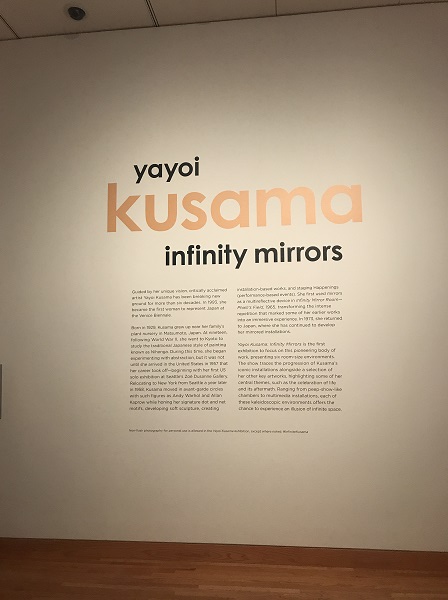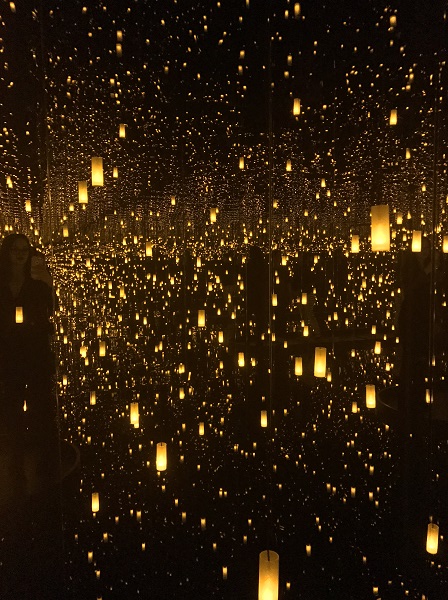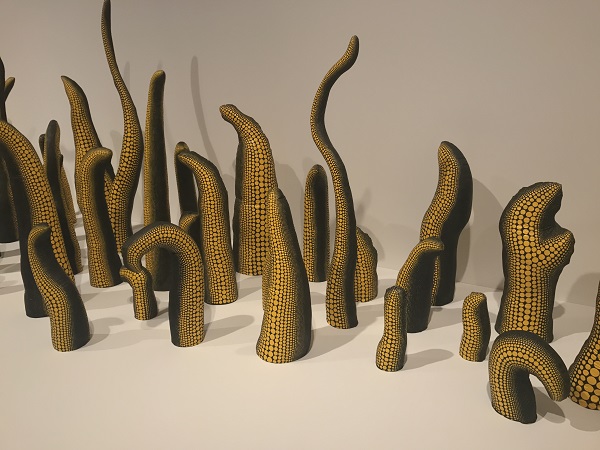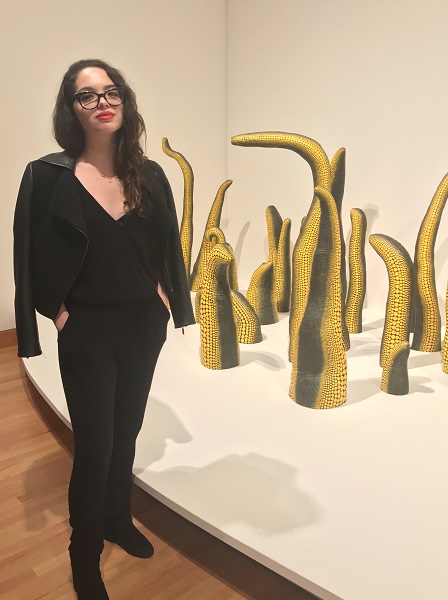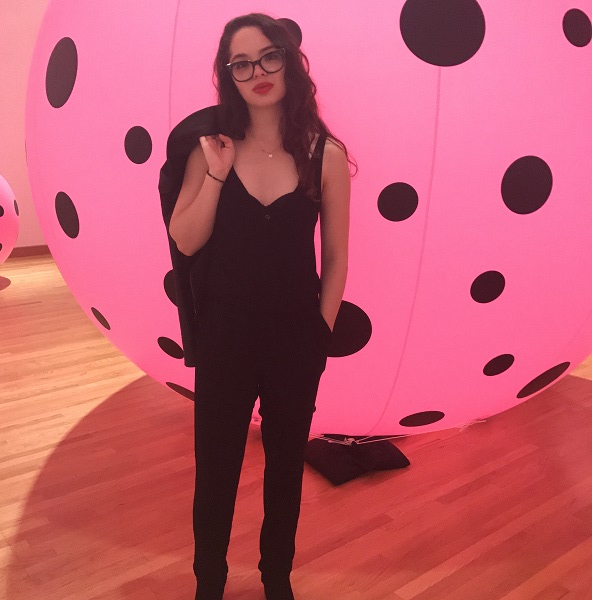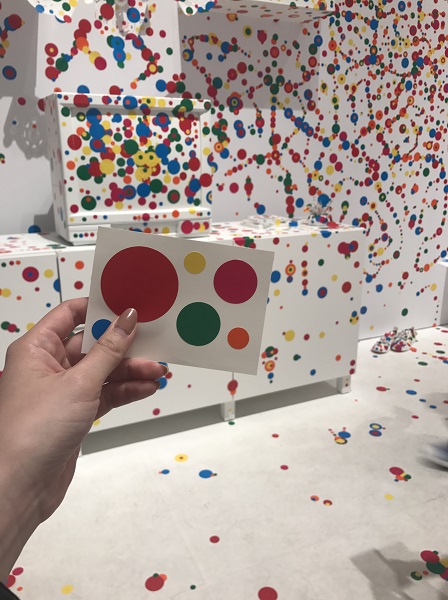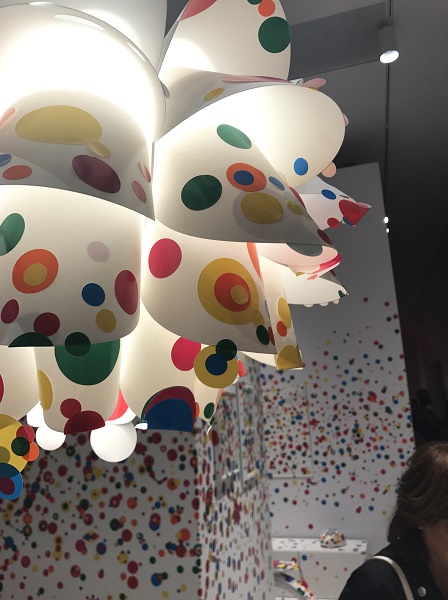Words matter immensely.
They hold a subtle, quiet power to them that can inspire change, educate people, incite violence, topple empires, and dismantle archaic laws.
They evoke strong feelings and emotions from us as individuals.
They can reduce and dismiss important topics and events by using euphemisms and lesser words, or they can convey the importance of something by using direct and strong vocabulary.
This is why terminology is so important.
It recently came to my attention that the terminology surrounding the Japanese American (JA) wartime experience has been changing and evolving in a large way. It’s a topic that has been discussed since the mid to late 20th century; however, it’s become more “mainstream” over the past few years, as big JA organizations have been promoting the terminology movement and intentionally moving away from using the word “internment” and using “concentration camp” instead.
A few months ago, I wrote and published a two-part article about my grandma’s time in the camps. At the time of writing it, I was still using the word “internment camp” because I was unaware of the nuances in JA terminology. I would use words like “incarceration,” “internment,” “relocation camp,” and others synonymously because that was what I was used to seeing throughout my numerous sources of research. Internment camp is still the most popular term used to describe the camps by the general (mostly non-JA-affiliated) media and public. After the publishing of my second article, I was notified of the change by some vitriolic attacks on Instagram regarding my misuse of “internment.” The attacks became so vicious that I ended up feeling threatened by someone who posted my private Instagram page to her story in order to encourage her followers to go to the post and attack me further. I had to block her. The post itself contained a photograph of my beautiful, deceased grandma in whose memory I wrote this article. The barrage of attacks against me and then my publisher under her image were incredibly disrespectful and an insult to her memory. I spoke with my publisher, and we agreed to edit my two articles by removing instances of the word “internment” and adding in a disclaimer about it. While I don’t like to give in to bullies, there was an important point hidden underneath all the vitriol. That is what initially inspired me to write this article, so I researched the subject further. What I’ve discovered is truly interesting and provided insight on the importance of terminology in all aspects of life, history, and social justice.
DENSHO AND TERMINOLOGY
Densho is a leading organization in the JA community that I’ve had the pleasure of watching grow from a small online encyclopedia to the powerhouse that it is today. They were a research source for my undergraduate senior thesis. I used them again for an essay for my MA in history, and now for this article. I’ve kept up with them through the years over social media and am impressed with how much they’ve grown over the seven or eight years since I discovered them. The organization’s mission is “to preserve and share history of the WWII incarceration of Japanese Americans to promote equity and justice today.” They document the testimonies of Japanese Americans who were incarcerated in the camps, offering firsthand accounts, historical pictures, teacher resources, and other kinds of content geared towards education and promoting the principles of equal justice for all. Their page on terminology is frequently cited by various people, organizations, and sources. https://densho.org/terminology/
Densho addresses four important distinctions: forced removal versus “evacuation,” incarceration vs “internment,” Japanese American versus “Japanese,” and concentration camps versus “relocation centers.” The following explanation is directly from their terminology page.
Forced removal vs “evacuation”
“In early 1942, Japanese Americans were forcibly removed from the West Coast and forbidden to return. The government called this an ‘evacuation,’ implying the forced move was a precaution for Japanese Americans’ own safety, as in a natural disaster. In reality, this was a targeted exile of a single ethnic minority—carried out by armed soldiers, enforced by lawmakers and elected officials, and motivated, in part, by a desire to reap economic gains from the farmland and property Japanese Americans were forced to leave behind. ‘Exclusion’ and ‘mass removal’ are therefore more apt than euphemisms such as ‘evacuation’ and ‘relocation,’ because Japanese Americans were expelled from the West Coast and subject to arrest if they returned.”
Incarceration vs “internment”
“The commonly used term ‘internment’ fails to accurately describe what happened to Japanese Americans during WWII. ‘Internment’ refers to the legally permissible, though morally questionable, detention of ‘enemy aliens’ in time of war. There were approximately 8,000 Issei (‘first generation’) arrested as enemy aliens and subjected to what could be described as ‘internment’ in a separate set of camps run by the Army or Department of Justice.* This term becomes a misleading, othering euphemism when applied to American citizens detained by their own government; yet two-thirds of Japanese Americans incarcerated during WWII were U.S. citizens by birth and right.
Although ‘internment’ is a recognized and widely used term, we encourage the use of ‘incarceration,’ except in the specific case of Japanese Americans detained by the Army or DOJ. ‘Detention’ is used interchangeably—although some argue that the word denotes a shorter period of confinement than the nearly four years the camps were in operation.
*A smaller number of Nisei, mostly Kibei and mostly in Hawai`i, were also swept up in the DOJ internment system.”
Japanese American vs “Japanese”
“Media outlets and other sources often refer to the more than 120,000* people of Japanese descent imprisoned by the U.S. government during WWII as simply ‘Japanese’—but this both erases their American identity and conflates Japanese Americans with Japanese citizens in Japan. The wartime government employed this strategy itself, inventing the orwellian term ‘non-alien’ to describe Japanese American citizens in public documents.
The Nisei (‘second generation’) were U.S. citizens born to Japanese immigrant parents in the United States. Many had never set foot in Japan. Their Issei parents were forbidden by discriminatory law from becoming naturalized American citizens, but by the 1940s most had lived in the United States for decades and raised their families here. Most had no plans of returning to Japan, and would have become naturalized citizens if allowed. By birth or by choice, Japanese Americans were just that—American.
*The oft-cited ‘120,000’ figure comes from the War Relocation Authority’s official statistical compilation, The Evacuated People, which cites a total of 120,313 people in the WRA system. However, including DOJ/Army internees and those who were held in ‘assembly centers’ but resettled before being transferred to WRA custody, that number is closer to 126,000.”
Concentration camps vs “relocation centers”
“There is still some debate over the most appropriate terminology for the camps where Japanese Americans were confined during WWII. At first, Japanese Americans were held in temporary camps the government called ‘assembly centers’—facilities surrounded by fences and guarded by military police. This term is clearly euphemistic in nature, as the ‘assembly’ was carried out by military and political force. Therefore, we recommend its use only as part of a proper noun (e.g. ‘Puyallup Assembly Center’) or in quotation marks for specific references to this type of facility.
Japanese Americans were later transferred to longer-term camps which the government called ‘relocation centers.’ (Some officials, including the president, also referred to them as ‘concentration camps’ in internal memos.) Despite the seemingly innocuous name, these were prisons—compounds of barracks surrounded by barbed wire fences and patrolled by armed guards—which Japanese Americans could not leave without permission. ‘Relocation center’ fails to convey the harsh conditions and forced confinement of these facilities. As prison camps outside the normal criminal justice system, designed to confine civilians for military and political purposes on the basis of race and ethnicity, these sites also fit the definition of ‘concentration camps.’ As such, Densho’s preferred term is ‘concentration camp’ (e.g. ‘Minidoka concentration camp’). We do also use other terms, such as ‘incarceration camp’ or ‘prison camp,’ but urge the avoidance of euphemisms such as ‘relocation center’ and ‘internment camp.’
Our use of ‘concentration camp’ is intended to accurately describe what Japanese Americans were subjected to during WWII, and is not meant to undermine the experiences of Holocaust survivors or to conflate these two histories in any way. Like many Holocaust studies scholars, we believe that ‘concentration camp’ is a euphemism for the Nazi death camps where millions of innocent Jews and other political prisoners were killed. America’s concentration camps were very different from Nazi Germany’s, but they, and dozens more historical and contemporary examples, do have one thing in common: people in power removed a minority group from the general population and the rest of society let it happen.”
RESEARCH
During my research phase, I reached out to many notable JA organizations and a large variety of members of the JA community. I was lucky enough to connect with Densho and have a Zoom meeting with Brian Niiya, their Content Director.
Brian reminded me that the terminology issue sprang up in the 1970s during the early redress movement. Leaders of the movement wanted to eliminate the use of euphemistic words (i.e. relocation, evacuation) to describe their experience. According to Brian, the 1990s saw a push for moving away from “internment” and using “concentration camp” instead.
I asked Brian about people, like myself, who aren’t comfortable with using the term “concentration camp,” and he informed me that although he believes it’s the best term to use, it’s ok if people don’t want to use it. I personally will only use “concentration camp” if I’m trying to make a strong and direct point, but otherwise I don’t like using it. I have also studied the Holocaust extensively and don’t like the comparisons it inevitably invites. Although “concentration camp” is a euphemism used for the death and extermination camps of the Nazis, the term has become synonymous with the Holocaust in contemporary times. Brian also mentioned that there are highly respected scholars who chose not to use that term, citing Alice Young Murray and Eric Muller as two examples. Neither of these scholars use “concentration camp” in their books.
I have tirelessly searched online for an “internment” definition similar to the alien-only definition provided by Densho. However, all the definitions I found basically say: the state of being confined as a prisoner, especially for political or military reasons.
Many people I know who are interested in the terminology discussion looked up this definition and sent it back to me asking for an explanation. I myself did not have one so I put this forth to Brian and he was able to provide further insight into this:
“The term ‘internment’ is misapplied. The camps that the Issei were kept in can properly be called internment camps but the War Relocation Authority camps that imprisoned American citizens cannot be properly applied.
Colloquially, people use internment interchangeably with incarceration. In general dictionaries, the definition will be non-specific.
Part of the problem is there hasn’t been a replacement term for internment as this broad term. It’s not ideal to replace internment with these terms that are associated with penal institutions that imply guilt.”
Many thanks to Brian Niiya for discussing this important topic with me.
SPEAKING TO MEMBERS OF THE JA COMMUNITY
My research also included a brief questionnaire on terminology and word choices. I sent a six-question survey to a variety of people in the JA community.
The variety in the responses received indicate that many divisions exist within the JA community itself over the preferred terminology used. I will sum up my findings through each question.
Question One
Are you an active member of the Japanese American community? (i.e. politically, culturally, or some other way? I’d like you to tell me the ways that you’re involved in the community, whether it be big or small.)
The answers here were diverse – a few people said no but most said yes, just in different ways.
Some didn’t specify how they are active but said they are very active; some said they are culturally active; some are involved with their Buddhist church; some are involved with the Japanese American National Museum (JANM) and some with the Japanese American Citizens League (JACL); some are involved with a variety of JA organizations.
Question Two
What words have you used throughout your life to refer to the JA wartime experience?
The majority of people here actually said “internment” or “internment camp.” A few mentioned “concentration camp” as well. Someone said: “I’ve transitioned from using the terms ‘intern/internment/internee’ to ‘incarcerate/incarceration/incarceree’. In addition to ‘incarceration camps’, I refer to them as ‘prison camps’.” Another person provided a long list of the words they’ve used: “Internment camp, incarcerated, forcibly removed, Department of Justice camps, relocation camp, propaganda, wartime hysteria, racism, fear”.
Question Three
Have you heard about the recent changes in terminology surrounding the JA wartime experience – i.e. the move away from “internment” to “incarceration,” the more prominent use of “concentration camps,” and the move away from using “relocation camps”?
Half of the people said no and half of the people said yes. It was split fairly even down the middle. One person mentioned that they think there needs to be more education around the use of the word “concentration camp” because of its association with the Nazi death camps. Another person shared their own personal experience: “My understanding was that there were two different camps. One for suspected criminals – concentration camps, and one for innocent families – relocation camps. I didn’t hear the term internment camps until I was older – high school or college. Incarceration is used today to describe jailed criminals. It would be offensive to me if someone suggested that my mother was incarcerated.” One individual pointed out that this is, in fact, not a recent change: “Yes, but the changes are not recent. There were JA community discussions about the euphemisms embedded in terminology like ‘relocation and internment’ during the 1960’s. The sentiment in the Japanese American community was that their experience being forcibly removed from their homes and incarcerated in camps out in the middle of no-where was extremely unjust, and efforts began immediately after the end of WWII to correct the narrative and address the injustice.”
Question Four
What words are you comfortable with using now?
I was surprised that the majority of the answers here were “internment camp.” A few people said “concentration camp” and one person made a very good point: “I guess it depends on context. If among JAs or Asian Americans I feel ok saying concentration camp or incarceration. But I feel less comfortable using those terms in settings where people are not aware of or ignorant about WWII experiences.”
I believe that I should also note that my grandma, a survivor of the camp, referred to them as “relocation camps” in her memoirs.
Question Five
What are your thoughts on the changing terminology and the acknowledgement of words like “internment” and “relocation” being euphemisms and the move away from using them?
I believe that the answers to this question are all worth noting:
Concentration camps are synonymous with the Nazi genocide of Jews and that’s not what happened with JA. They were however wrongly and forcibly removed from their homes, lost possession[s] and property that their family worked hard for because of a foreign attack from a non white nation. No one set up “internment camps” during the Cold War for any Eastern Europeans. Why?
—
I think these are too “soft” for what the reality of the situation was. People were forced to leave their lives and these terms make it sound like it was more of a choice. I am happy that people are thinking more about leaving these terms behind. This is something my family has talked about for a long time, but when seeing the amount of education that is common on this subject (very little education for the average student), it needs to be addressed as a negative part of US History.
—
I am for using terms that are not euphemisms.
—
I personally don’t feel comfortable referring to Japanese internment as “concentration camps.”
—
JA people, even Nisei who had citizenships were denied their legal rights and sent to concentration camps. They lost their assets and also their pride.
—
Accompanied by education, I think whatever words that come closer to the truth of the experience are a move in the right direction.
—
While I believe the “internment” of JA was unjust and disgraceful, I don’t feel the need to change the terminology that is already established. Currently our society is experiencing many issues of racism. So I can understand why some individuals may want to use different words.
—
Internment camp is a term that is specific to the Japanese American experience during WWII. I do not consider “internment” to be a euphemism. I think it would be inappropriate to use the term concentration camp. Was the Minidoka experience so similar to the Auschwitz experience? Then let us not equate them by using the same words to label them.
—
I learned about the incarceration experience at JANM and so that vocabulary was what I used first. I may be biased in that way because I was first exposed and did the deep dive at JANM because of my job, and so those terms were my first vocabulary and seem most correct to me. In other Non-JA settings, admittedly it is a little awkward sometimes to use the stronger terms, but as I reflect on it, it seems like the right terminology rather than euphemistic language.
—
This is 2021- times change and terminology has changed.
—
I don’t think the word “internment” is a euphemism, and I grew up using that word. Using this word doesn’t lessen the unjust and horrible conditions I know the JAs experienced there.
—
I’m all for changing = correcting the terminology because the old euphemisms were a cover-up for the injustice inflicted on Japanese Americans, 2/3rd of whom were American citizens. There were political and economic forces (e.g. successful Japanese American farmers that were highly resented by white farmers) that had nothing to do with Japan bombing Pearl Harbor.
—
Again, Densho has been an invaluable resource. Their whole mission is to rightly preserve and tell the story of the Japanese American World War II experience. https://densho.org/core-story/
—
It really hasn’t been explained to me why internment is unacceptable. I can see why relocation camp should not be used.
Question Six
Have you felt like you’ve experienced any forms of discrimination because of your heritage and the history of Japan in WWII?
I was also surprised with the answers here because the majority of people answered no. A few people have experienced racism throughout their lives, but it’s mainly been smaller aggressions and smatterings of racist behavior.
I, however, have had the misfortune of experiencing discrimination because of my heritage and the history of Japan from WWII. My first boyfriend turned out to be a racist.
Since I am mixed-race, I am typically seen as “Asian” by white people and “white/Western/foreign” by Asian people.
My ex was a white man in the US Navy from a rich, privileged background.
He was extremely racist and sexist to me.
He would have me drive to pick him up from the naval base, but then wouldn’t let me drive back because I was “a bad driver since I was an Asian female.”
He would swat at me at times and say “bad Asian!” like he was disciplining a dog.
But perhaps one of the worst things he did to me was his repeated (and I say REPEATED) verbal assaults. He would get in my face and scream “YOU BOMBED PEARL HARBOR! YOU BOMBED PEARL HARBOR!” He would even get his Navy friends to join in. They would all surround me, screaming this at me.
And this ex knew that my grandma was in the Japanese American prison camps.
He was my first boyfriend, and I was young, so I struggled to find my voice and stand up to him. I gained that ability after we broke up. I became a huge feminist and big advocate of the JA wartime experience. Although, I do not like to credit an ignorant white man for my growth into the strong feminist I am today. But I guess what doesn’t kill us, makes us stronger.
That was some of the worst discrimination I’ve faced as a Japanese American. Of course there’s been multiple instances of the classic ignorance people show towards anyone Asian – but this was the worst.
A DIFFERENT PERSPECTIVE FROM A CAMP SURVIVOR
My great aunt Chidori Reynolds (née Ogawa) was the only one from her family forced into a camp. The Ogawas, my other Japanese family, were from Hawai’i, but Chidori had the misfortune of living on the mainland during the war. When she was released, she became the first Nisei woman from Hawai’i to enlist in the military. I was able to track down some primary source newspapers covering her work in the WACs and found a quote by her that, at the least, is very interesting, and, at the most, can be considered quite inflammatory: “Speaking of her experiences in the relocation camps, Private Ogawa said that although she was glad when she was released, she didn’t mind it because she knew it was an emergency measure and the only way to handle the problem presented by the Japanese living on the mainland with the speed that was necessary.”* I was shocked when I read that but I think it goes to show that this topic is much more nuanced than I previously believed.
*This quote is from the Wednesday June 7, 1944 edition of the Honolulu Star-Bulletin.
COMMENTS FROM THE JEWISH COMMUNITY
All the Jewish community members I spoke with, except for one, seemed to have no problem with the JA community using the term “concentration camp.” A few of them mentioned that there are people they know and other members of the Jewish community who would be upset by it.
I think it is accurate to say that questions like these will never evoke a singular, united response from any persecuted groups of people. Everyone will have a different answer; people will always disagree within communities themselves. I do not speak for the Japanese American community as a whole, just like how none of the individuals I spoke to represent their entire community either. It is important to speak to a diverse group of people to try and gauge an accurate representation of people’s thoughts and opinions.
One person made a point of describing how important language and terminology are to them, while another made the opposite point: “the words used should not be the concern. As long as language calls attention to the inhumane treatment, that’s what we should focus on: the inhumane treatment and how to stop it.”
Some more notable responses:
“Honestly, you are right, concentration camps are a euphemism for camps to hold ‘political prisoners’ but obviously this was not the case. I use concentration camp, but I also use the words labor and death camps, obviously most of the camps were death camps, but in WW2, there were camps that were ‘labor’ camps too. Maybe these would be more fitting terms. Maybe in your article you can refer to this terminology and how internment is not appropriate, these were labor camps that took ‘political prisoners’ away from their families and homes simply because of their race, ethnicity, or religion. That’s not internment, that’s not political prisoners, that’s not protection, it’s a discriminatory act that enables others to think it’s ok to be racist and discriminatory as well. This is why we STILL have a problem with racism in the US because our government has never protected us but singled us out as enemies rather than uniting and embracing our diversity as a country. This is why we are divided as a country.
As a teacher and a Jew, whatever the terminology, the concept is the main focus. What Japanese Americans went through in those camps can never be erased, that’s on the US to admit they made a BIG mistake and to educate the future generation about what REALLY happened in the camps so that it will never happen again.”
—
“For me, personally, the phrase ‘concentration camps’ is emotionally charged and connotes systemic genocide. While the US treatment of the Japanese Americans was horrific, it did not include gas chambers, death ovens, bizarre medical experiments and all sorts of things that were meant to destroy a group of people.”
—
“In general the Jews were slaughtered in the concentration camps and the Japanese Americans were not killed (for the most part) in the internment camps. But, after doing some reading on this subject and some thinking about the definitions, I think the connotation of a concentration camp as a death camp is not the same as its actual definition. And, given that an internment camp is a type of concentration camp, as a Jew, I am not offended by [the] use of the term concentration camp to refer to the camps in which Japanese were imprisoned in the Western U.S. during WWII. In fact, if the use of this term helps to bring awareness of the brutality of these camps and of the horrible nature of the Executive Order 9066, then I think it should be used by all means. Perhaps the answer is start referring to the Nazi concentration camps as death or elimination camps. But they’re all concentration camps.”
—
“First, I think that if we truly believe in ‘never again’ when it comes to the Holocaust, we have to remember that the Holocaust didn’t only target Jewish people.
And we have to remember that while the killing of prisoners in Nazi camps was the ultimate evil, the imprisonment of them is itself a huge evil. (Just as the forced removal of Native Americans to reservations was itself a great evil, even had it been completely peaceful.)
I also think it’s important not to see the Holocaust as an exceptional evil, one that cannot be compared to others. It’s important to see a continuity among the Holocaust and the Japanese internment camps and the Middle Passage/chattel slavery.
This doesn’t mean we should elide the differences across these historical incidents either. But it’s fruitful to consider the overlap between, say, the European antisemitic discourse of Jewish split loyalties and the similar charges leveled at Japanese Americans during WWII, just as we see similar discourses in anti-immigration discourses when it comes to demands for total assimilation.
It’s deeply annoying when everything we don’t like is called ‘fascist’ and anyone to the right of us is a ‘Nazi,’ but that’s not what I see happening [when] people refer to the internment camps as concentration camps. That said, I can also respect the desire to reserve that term for the Nazi death camps out of a desire, I imagine, to make ‘concentration camp’ and ‘death camp’ synonymous terms and to respect the historical specificity of the Holocaust.”
MY PERSONAL EXPERIENCES AND OPINIONS
One thing I’ve recently learned is the nuance surrounding the whole Japanese American experience during WWII. Back in 2013-2014 when I was researching and writing my senior thesis, the information presented about the camps was more “uniform” and generalized.
The Japanese Americans were generally all presented as well-behaved, well-mannered. They described their experience as “sho ga nai”/”shikata ga nai” (“it is what it is”/”it can’t be helped”), the model minority stereotype that America loved to force upon us. While part of that is true, that attitude is very Japanese. My family themselves didn’t complain about the camps but they did discuss them and help educate us.
I recently read the book “No-No Boy” by John Okada. It’s about the aftermath of the incarceration and the boys who refused to put their signatures on documents at the camps that signed them up for the draft and pledged allegiance to the U.S, the same country that had incarcerated them in camps. They were imprisoned and spent the rest of the war in jail. In addition, the Japanese American community ostracized them after they returned home.
I’ve also recently learned about the cold-blooded murder of a man out walking his dog in one of the camps. My resources from before said that there were no unnatural deaths in the camps or violence imposed upon the Japanese. This is now proving to be untrue.
All this is to say that the history, as well as the terminology, surrounding the camps is changing as we uncover more things and evolve as a society.
I have been using the words “internment camp” for all of my life up until a few months ago. I was surprised to see the response I received and was opened up to a brand new terminological discourse. I believed I was quite the expert on the camps and the JA wartime experience, but this goes to show that I still have a lot more to learn.
When I see the words “internment camp” now, I cringe. I feel uncomfortable because it looks wrong to me. However, when I see the words “concentration camp” being used, I feel uncomfortable as well. This term still holds a large tie to the Holocaust for me, which is a topic that I’ve also spent a lot of my life studying as well. I’m currently at a loss of what to call them. To people who know me and other Japanese Americans, I just refer to them as “the camps.” I’ll need to spend more time trying to figure out what I myself am personally comfortable with. I am still very much on this terminological journey.
NEXT STEPS
I believe the next step to take is simple: education. Spread the word! Tell your friends, your colleagues, your family, your classmates, your enemies, people on Facebook, strangers on the street, anyone. I can confidently say that I myself have managed to bring more awareness around this topic through both my pursuit of research and through mentioning it in conversations I have, both online and in person. Most people tend to live in a bubble and so many people outside of the JA community have either never heard of the camps or only heard about them once they were older. Funnily enough, when I lived in Paris and had to explain (all in French, bien sûr) why I can’t speak Japanese to the many many French people who asked what I am (my fellow mixed race people – how sick are you of hearing “what are you?”), I was given the chance to educate them about the JA wartime experience. Et voilà, I was even able to educate the people of Paris about the camps.
Discover Nikkei, a project of the Japanese American National Museum, is a community website about Nikkei identity, history, and experiences. They were kind enough to send me some important articles surrounding the topic of terminology:
WORDS CAN LIE OR CLARIFY: Terminology of the World War II Incarceration of Japanese Americans*
By Aiko Herzig-Yoshinaga
Words Do Matter: A Note on Inappropriate Terminology and the Incarceration of the Japanese Americans
By Roger Daniels
JANM’s former curator also talked about this…
“Concentration Camp” or “Relocation Center” – What’s in a Name?
By James A. Hirabayashi
Also, in 2019, their curator, Karen Ishizuka, talked about this matter.
CONCLUSION
Unfortunately, we all know that history repeats itself. That’s the premise of this history blog. We continue to see horrifying instances of racism, prejudice, and imprisonment today. Migrants fleeing their violent homes just to find themselves imprisoned in camps at the US border; the alleged treatment of Uighurs in China; the ethnic cleansing of the Palestinians; the indigenous residential schools in Canada; the police murdering Black Americans; and the violent plague of Anti-Asian hate, to name a few. The pages of history are bloodied by the constant cyclical nature of violence and discrimination. Is it human nature? Perhaps it is. But perhaps we also have the capacity to be better. We as humans are able to love as blindly as we hate, sometimes even confusing and conflating the two. But we can be better. It is our responsibility as human beings to acknowledge the humanity in our neighbors, regardless of our outward differences. We all share one thing: the gift of human life. We can’t throw that away.
In closing, I’d like to invite you, the reader, to continue learning about the terminology surrounding the JA experience, to spread the knowledge, and to please be kind on the internet to people who aren’t aware of this change in terminology yet. Thank you.

